A full, youthful face with naturally plump cheeks is often seen as a symbol of vitality and radiance. However, over time or due to individual factors, the cheeks may lose volume, making the face appear tired and less vibrant. Cheek filler is a safe, non-surgical solution that helps restore freshness and enhance facial contours naturally. Let’s explore more about this aesthetic procedure with Aesthetic Surgery Center in Vietnam in the article below.
What is cheek filler?
Cheek filler is a modern cosmetic technique that restores facial volume by injecting filler beneath the skin to enhance facial structure. It is often chosen by individuals with hollow or sunken cheeks who wish to regain a fresher and more balanced appearance.
The main ingredient, hyaluronic acid, has the ability to retain moisture and stimulate collagen production, helping the skin become smoother and the face appear more youthful and supple, without the need for surgery.
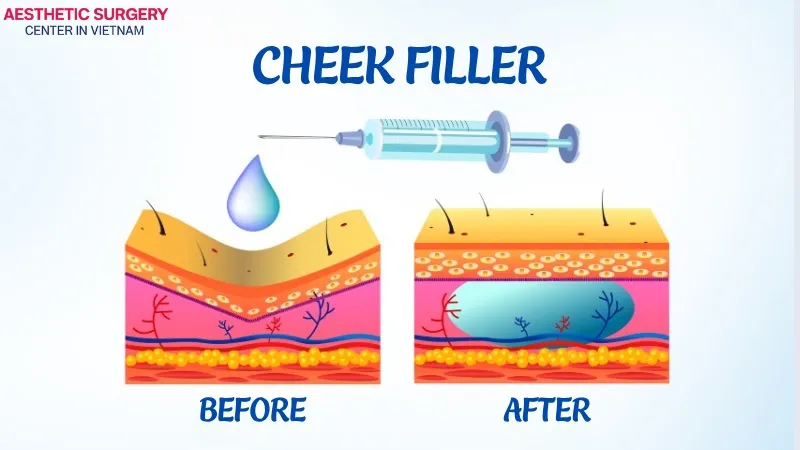
What are the types of cheek filler?
Currently, there are several types of cheek fillers available on the market, categorized based on their composition and purpose. This allows surgeons to choose the most suitable option for each client’s skin condition and aesthetic goals. Some of the most common types include:
- Hyaluronic Acid (HA): The most popular filler today, known for its high safety and excellent compatibility with the body. HA helps retain moisture, plump the cheeks, and create a soft, natural look. Its biggest advantage is that it can be dissolved and easily adjusted if needed.
- Calcium Hydroxylapatite (CaHA): This filler contains minerals similar to those found in human bones, providing support for soft tissue and stimulating natural collagen production. It lasts longer than HA—typically 12–18 months—and is ideal for those seeking more defined facial contours.
- Poly-L-lactic Acid (PLLA): This filler not only restores volume but also stimulates the body to produce collagen over time, improving skin structure gradually. Results appear after a few weeks and can last up to 2–3 years.
- Polymethyl Methacrylate (PMMA): A semi-permanent filler containing tiny microspheres that are not fully absorbed by the body, helping maintain long-lasting results. However, it requires a highly skilled surgeon, as it is difficult to adjust if injected incorrectly.

Who should and shouldn’t get cheek filler?
Cheek filler is one of the most popular aesthetic procedures thanks to its ability to enhance facial appearance quickly without surgery. This method is especially suitable for individuals with hollow cheeks, high cheekbones, or a lack of natural softness in their facial features. In addition, cheek fillers help improve sagging or wrinkled skin in the mid-face area. Those who wish to achieve a more youthful look with minimal pain, no downtime, and immediate results often choose fillers as a safe and effective beauty solution.
However, not everyone is a good candidate for cheek fillers. Pregnant or breastfeeding women are advised to avoid the procedure due to insufficient research on filler safety during this period. Individuals with allergies to filler ingredients, skin conditions, infections, or those taking blood-thinning medications should also refrain from treatment to minimize risks.
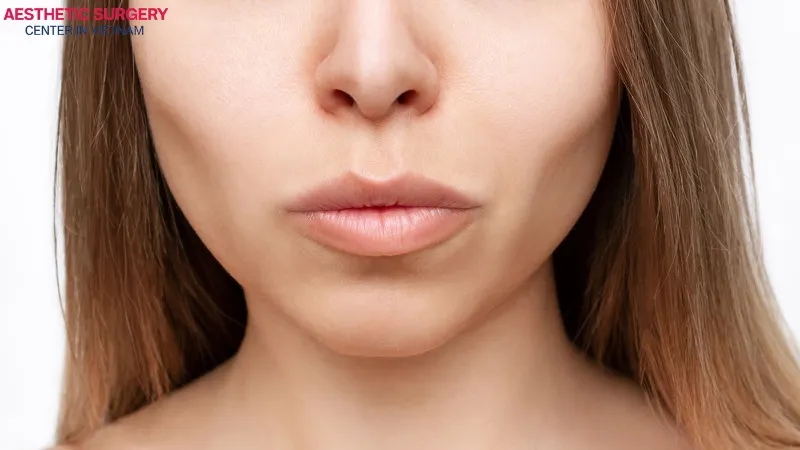
Pros and cons of cheek filler
Cheek filler is a popular cosmetic treatment thanks to its quick and natural results. Below are the main advantages and disadvantages to consider before the procedure.
Pros
Cheek filler helps correct hollow cheeks and sagging skin, creating a more balanced and youthful appearance after just one session. It is a non-surgical, minimally invasive technique that causes little to no pain, leaves no scars, and allows you to resume normal activities immediately after the treatment.
The procedure takes only about 15–30 minutes, yet the results can last from 6 months to over a year, depending on the type of filler and individual metabolism. In addition, fillers can be adjusted or completely dissolved with an enzyme, ensuring safety and flexibility in facial contouring.

Cons
The effects of cheek filler are not permanent, as the filler will gradually be absorbed by the body over time, requiring touch-up sessions to maintain the desired contour. Moreover, if the procedure is performed at an unqualified clinic or by an inexperienced injector, complications from dermal fillers such as bruising, swelling, lumps, or filler asymmetry may occur.
In more severe cases, vascular occlusion and skin necrosis can happen if the injection is done incorrectly. Therefore, to ensure both safety and aesthetic results, it is essential to choose a reputable clinic, use high-quality, approved fillers, and have the procedure performed by a certified aesthetic surgeon.

Cheek filler injection procedure
The cheek filler procedure is relatively quick and safe when performed by a qualified aesthetic surgeon at a reputable clinic. Typically, the entire process takes only 15–30 minutes and includes the following basic steps:
- Step 1: The surgeon conducts a facial assessment to evaluate the level of hollowness in the cheeks and advises on the most suitable type of filler, dosage, and injection points for each client.
- Step 2: The injection area is thoroughly cleansed and disinfected. A topical or local anesthetic is then applied to minimize discomfort during the procedure.
- Step 3: The surgeon carefully injects the filler into the cheeks using a specialized syringe, ensuring even distribution for a balanced and natural look.
- Step 4: After the injection, the surgeon gently massages the treated area to help the filler spread evenly and settle properly.
- Step 5: The client’s results are reviewed, and detailed post-treatment care instructions are provided to maintain the best outcome.

How much does a cheek filler cost?
The cost of cheek filler can vary widely depending on the type of filler, the amount used, and the quality of products provided by the clinic. On average, the price for 1cc of filler ranges from $190 to $2,200, depending on the filler brand and formulation you choose.
Please note that this is only an estimated range — the actual cost of dermal fillers may vary based on your facial condition, the filler recommended by your surgeon, the surgeon’s expertise, and the clinic’s service standards. Therefore, it’s best to schedule a consultation for a personalized assessment and an accurate quotation.
Note before and after cheek filler
To achieve optimal aesthetic results and minimize risks, it is extremely important to follow the proper pre- and post-treatment care instructions when getting cheek filler injections.
Before the procedure, you should have a thorough consultation with your surgeon about your overall health condition, allergy history, and the type of filler to be used in order to receive the most suitable recommendation. About 3–5 days prior to treatment, stop taking blood-thinning medications, aspirin, or consuming alcohol, as these can increase the risk of bruising and swelling after injection. At the same time, make sure the cheek area is free from inflammation, acne, or scratches. Get enough sleep and drink plenty of water so that your body is in the best condition for the procedure.
After the filler injection, avoid touching, pressing, or massaging the injected area for at least 24–48 hours to allow the filler to settle properly. In the first few days, avoid sleeping on your side, applying makeup, using steam treatments, or engaging in high-intensity exercise. You should stay well-hydrated and eat plenty of vegetables and fruits to help maintain the filler’s natural smoothness and firmness.
If mild swelling or bruising occurs, you can gently apply a cold compress to reduce it. In case of any unusual symptoms such as prolonged pain, redness, or hard lumps, contact your surgeon immediately for examination and proper treatment.

Safe clinics for cheek filler in Vietnam
To achieve the desired results, choosing a reputable clinic for cheek filler is an extremely important factor. With countless aesthetic centers emerging on the market, how can you determine which one is truly reliable, high-quality, and safe?
Aesthetic Surgery Center in Vietnam stands out as one of the most trusted and highly rated destinations for those seeking to enhance their natural beauty.
At the center, cheek filler treatments are highly regarded for using premium, FDA-approved filler brands imported from Korea and the United States, ensuring excellent safety, high compatibility with the body, and naturally beautiful results while minimizing the risk of complications. The clinic also applies the advanced MD Code multi-point rejuvenation technique with vegan-pure HA (Hyaluronic Acid) formulas that are 100% safe and free from harmful ingredients.
In addition, the team of surgeons and specialists at Aesthetic Surgery Center in Vietnam are highly qualified, with years of experience in the aesthetic field. Every step of the procedure is performed with precision and care, following international medical safety standards, ensuring a comfortable, safe, and satisfying beauty experience for every client.
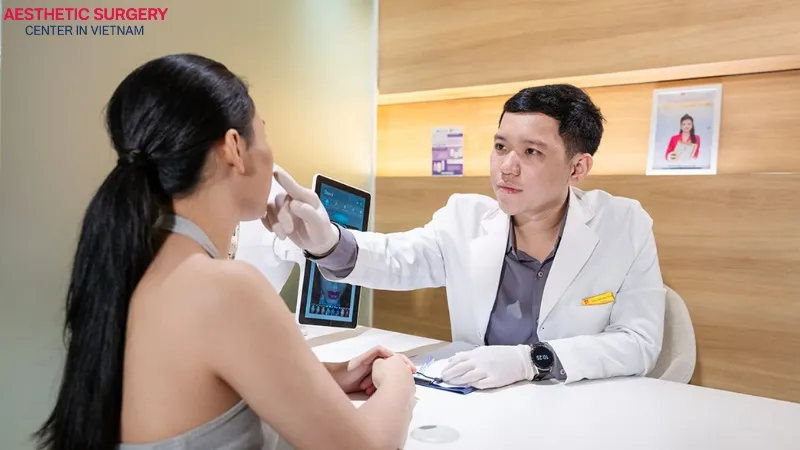
Cheek filler before and after photos
To help you better visualize the results of this procedure, below are before-and-after images of cheek filler injections, showing a noticeable transformation. The cheeks appear fuller and more youthful, giving the face a harmonious, natural, and refreshed look that many people desire.
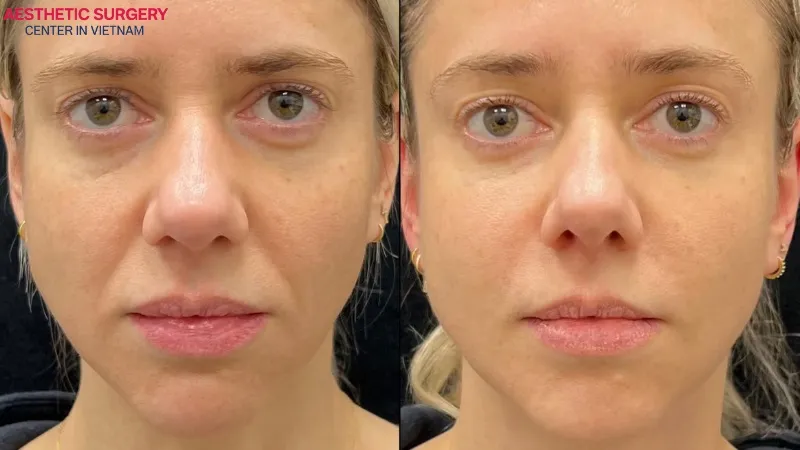

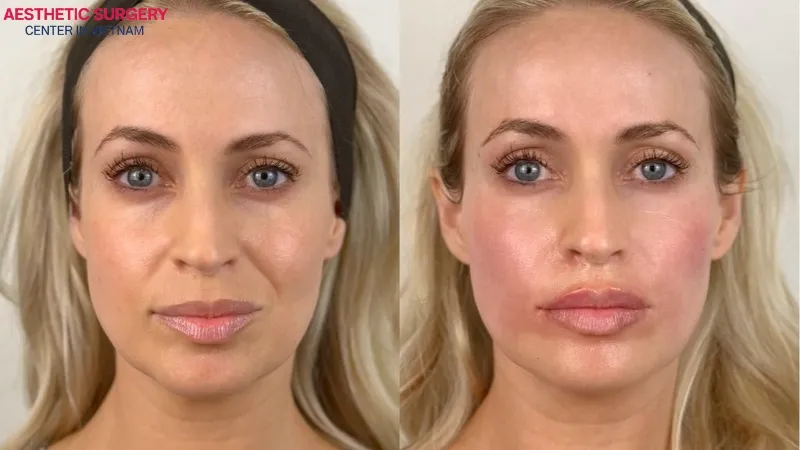
With the provided information about cheek filler, it’s clear that this is a modern aesthetic method that enhances facial appearance, bringing a more youthful and natural look. Aesthetic Surgery Center in Vietnam hopes that these insights will help you make an informed and confident decision for your own beauty journey.





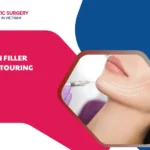

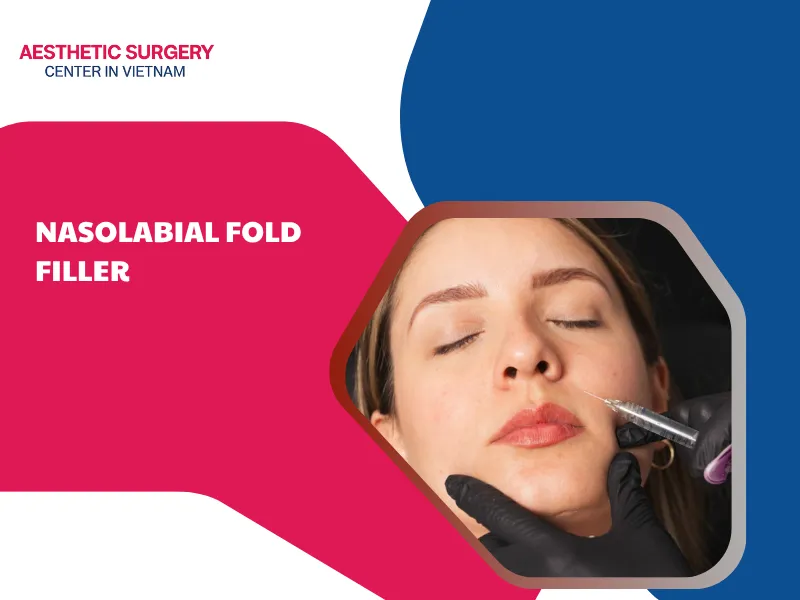
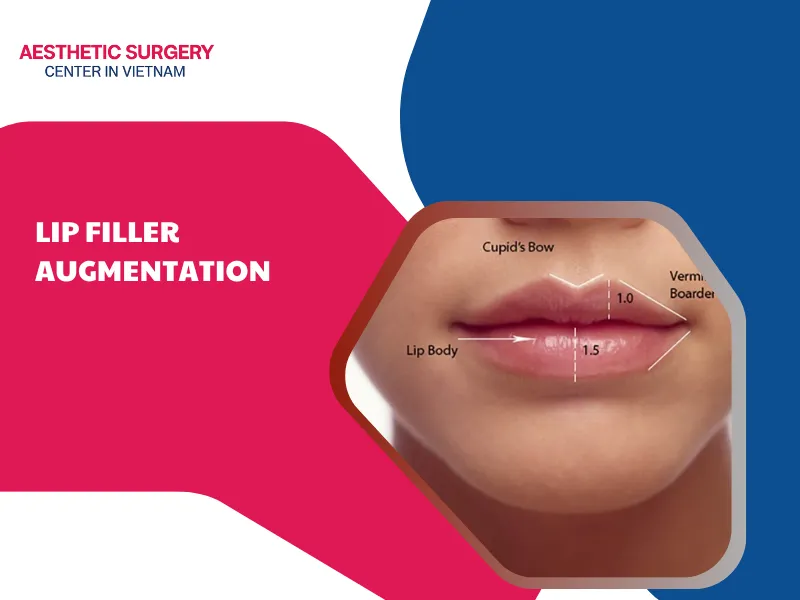
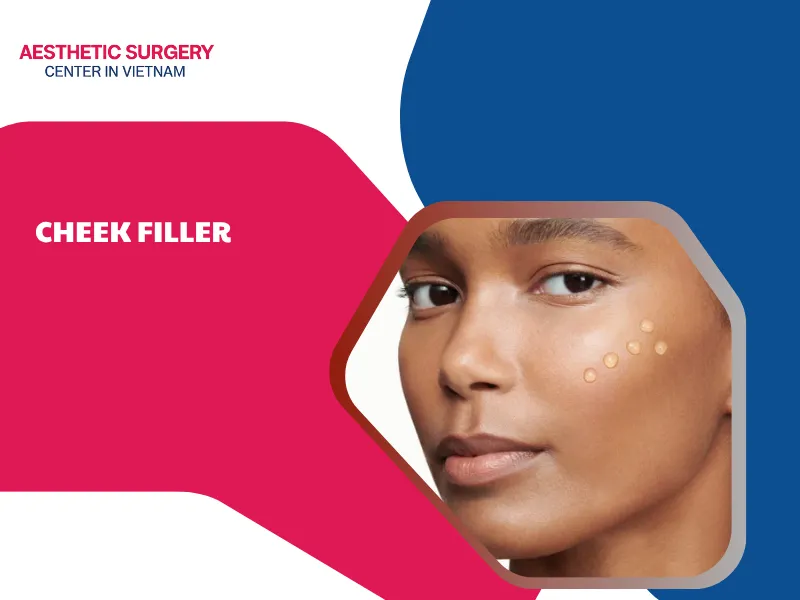
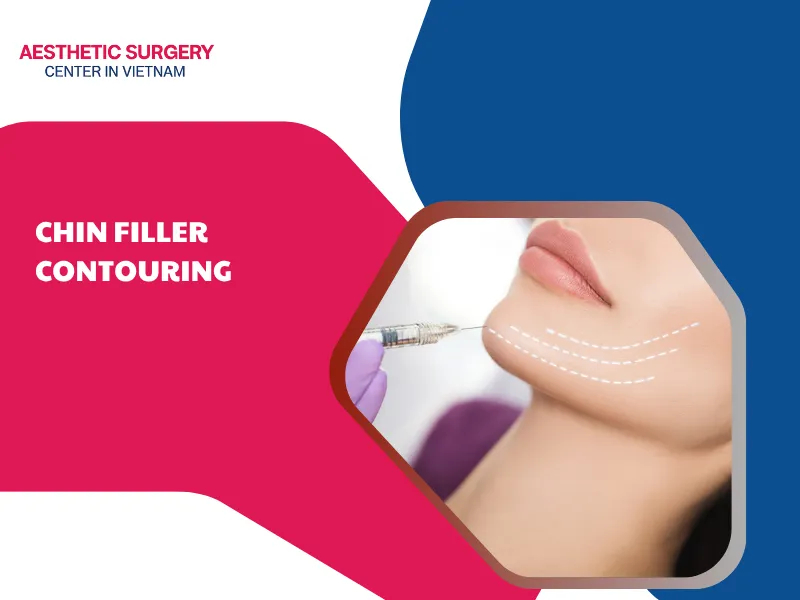
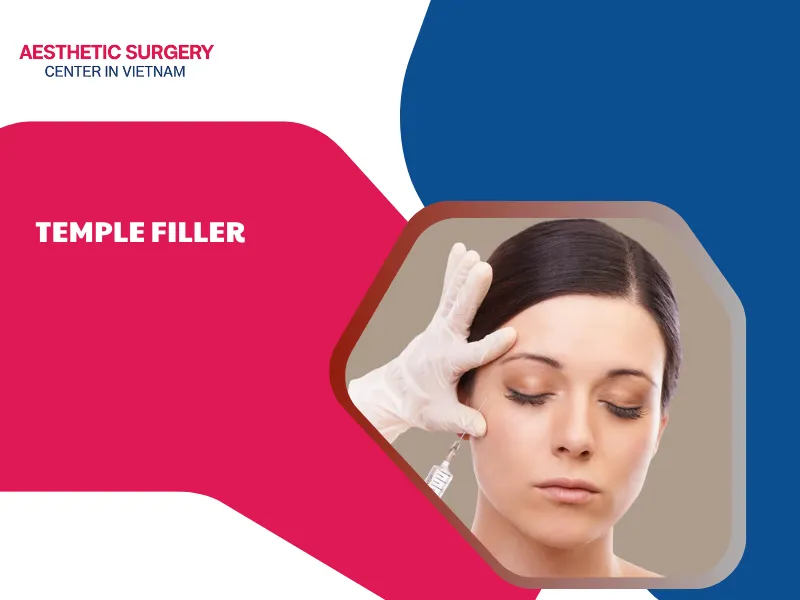




Comment on the post